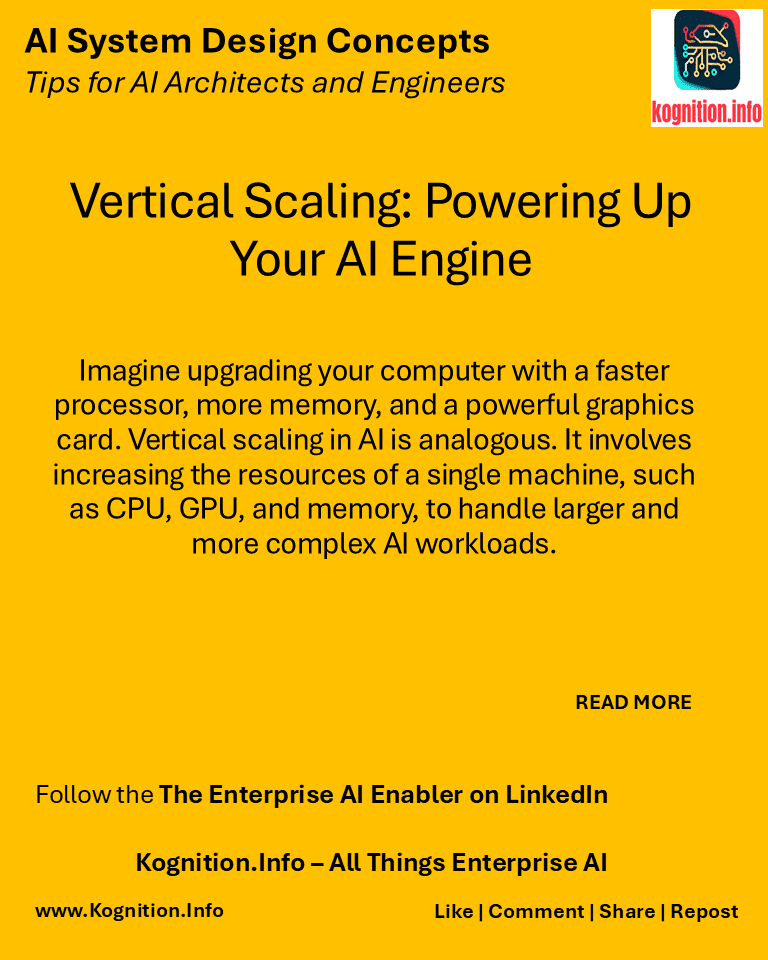
Imagine upgrading your computer with a faster processor, more memory, and a powerful graphics card. Vertical scaling in AI is analogous. It involves increasing the resources of a single machine, such as CPU, GPU, and memory, to handle larger and more complex AI workloads.
Use cases:
- Training large models: Providing sufficient memory and processing power to train complex deep learning models.
- Accelerating inference: Using powerful GPUs to speed up model predictions.
- Handling memory-intensive tasks: Increasing memory capacity to accommodate large datasets or intermediate computations.
How?
- Identify resource bottlenecks: Analyze your workload to determine which resources are limiting performance.
- Upgrade hardware: Increase CPU cores, memory capacity, or GPU power as needed.
- Optimize code: Improve code efficiency to utilize resources effectively.
- Monitor performance: Track resource utilization and adjust as necessary.
Benefits:
- Simplicity: Easier to manage than horizontal scaling.
- Reduced latency: Can improve performance by reducing communication overhead.
- Cost-effective for smaller workloads: May be more cost-effective than horizontal scaling for certain workloads.
Potential pitfalls:
- Limited scalability: There is a limit to how much you can scale a single machine.
- Higher cost: Upgrading hardware can be expensive.
- Single point of failure: If the machine fails, the entire system is affected.
